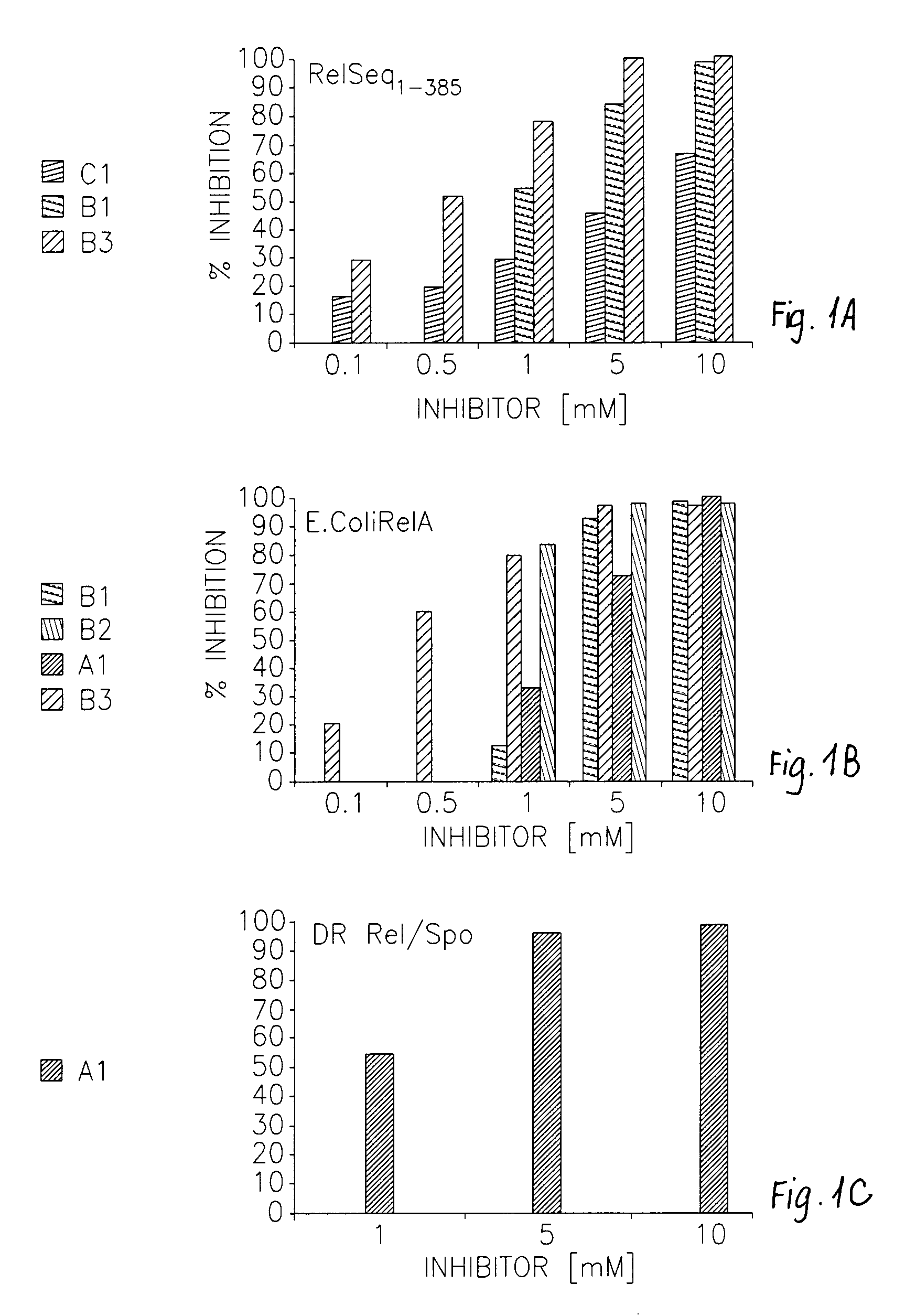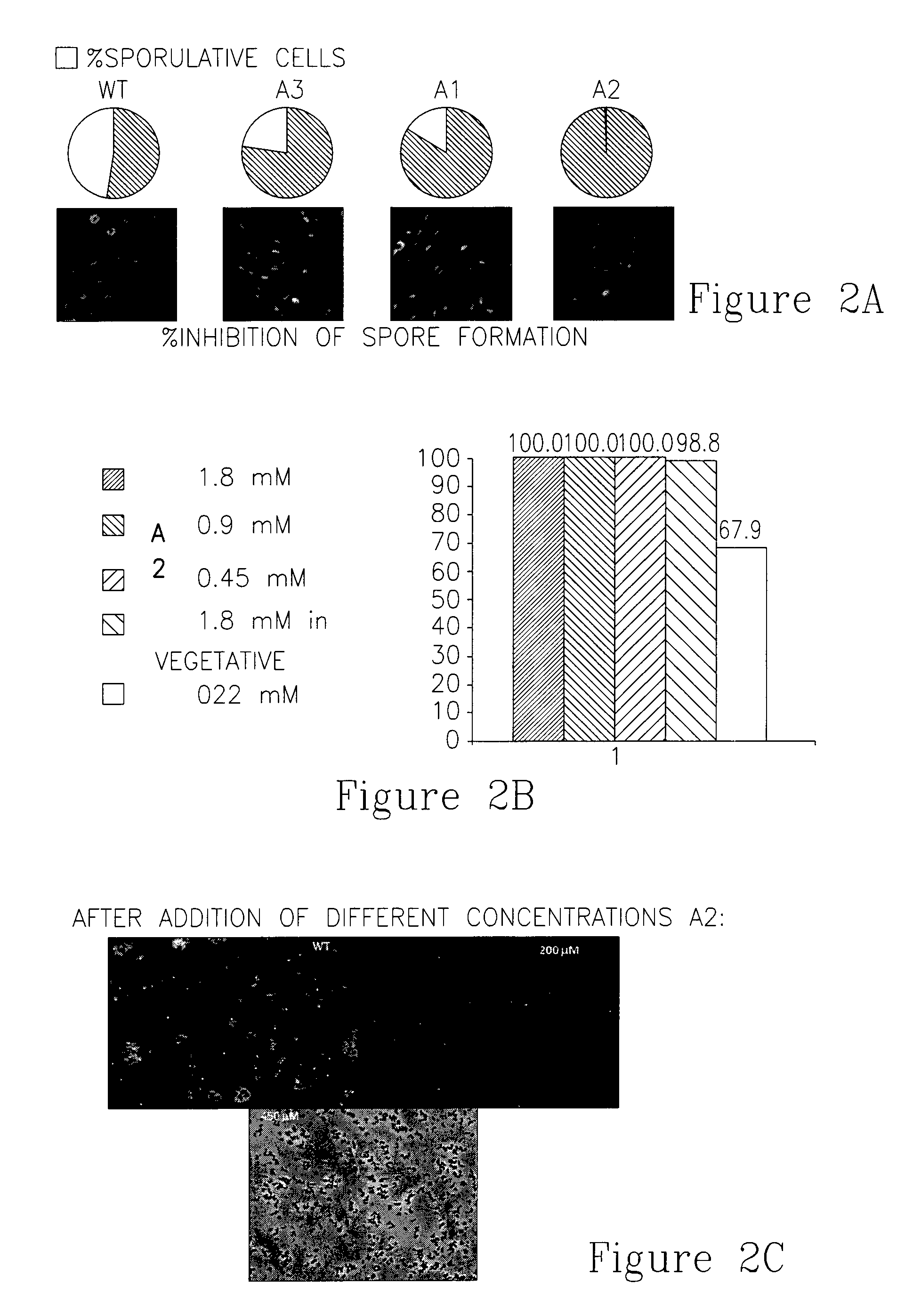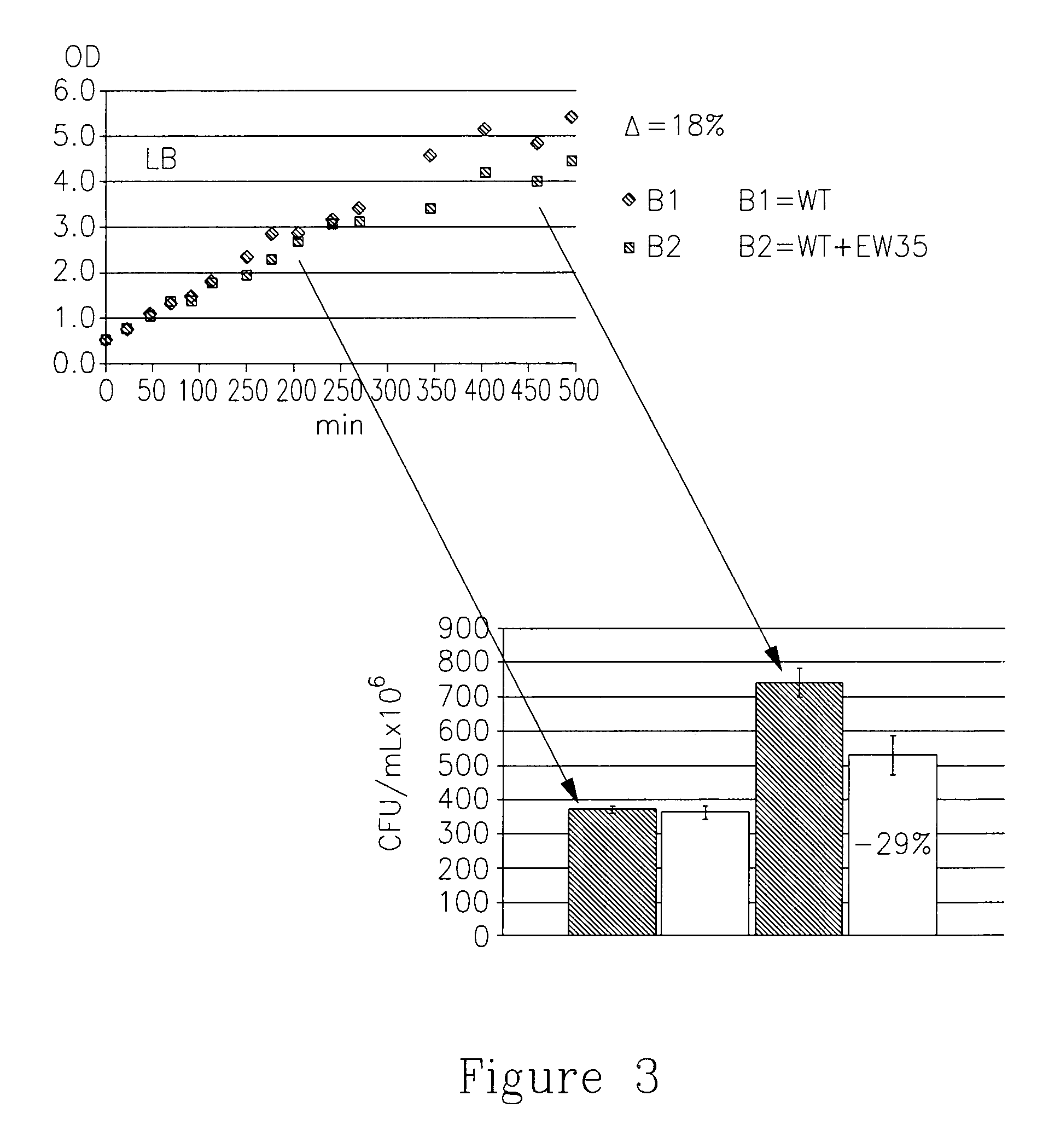Compounds for treating bacterial infections
a technology for bacterial infections and compounds, applied in the field of bacterial infection compounds, can solve the problems of bacteria looking for alternative pathways, starvation and death, and achieve the effect of preventing sensing
- Summary
- Abstract
- Description
- Claims
- Application Information
AI Technical Summary
Benefits of technology
Problems solved by technology
Method used
Image
Examples
example 1
Synthetic Procedures
Route A
Step 1
[0242]5′-DMT-2-isobutyryl-2′-deoxyguanosine was dissolved in dichloromethane (DCM) and treated with 4 equivalents of carbonyl diimidazole (CDI). After four hours at room temperature, the reaction mix was washed with water, dried and evaporated to afford compound 2.
[0243]
Step 2
[0244]Compound 2 was dissolved in DCM and treated with glycine benzyl ester and diisopropyl ethyl amine (DIEA). The reaction was stirred for 20 hours, washed with water and a solution of citric acid. The organic phase was dried and evaporated. The crude was purified by liquid chromatography.
[0245]
Step 3
[0246]Compound 3 was dissolved in 5% dichloroacetic acid (DCA) in DCM and stirred for 15 minutes. The solvents were evaporated and the crude purified by flash chromatography.
[0247]
Step 4
[0248]Compound 4 was dissolved in DCM and treated with 4 equivalents of CDI. After four hours at room temperature the reaction mixture was washed with water, dried and evaporated to obta...
example 2
Experimental Procedures
Protocols:
Cell-Growth Media:
[0284]The growth media used were Luria-Bertani (LB) (1.6% tryptone, 1% yeast extract, 0.5% NaCl). The antibiotics used for selections were used at the following concentrations: 100 μg of ampicillin / mL and 50 μg of kanamycin / mL.
Protein Purification:
[0285]Starter cultures of ΔrelA E. coli strain from a laboratory collection (Gropp 2001), over-expressing either pQE30-RelA (pQE30-XA (QIAGEN) carrying E. coli RelA) or pENH385 (pET-21(+) (Novagen) carrying Relseq385 (Mechold 2002)) were grown over-night at 37° C. with shaking. The next day, the cultures were diluted 1:50 in 400 mL LB containing the proper antibiotic and the cells have continued to grow at 37° C. until they reached OD600=˜0.6. Then, IPTG (1 mg / mL) was added and the cells were grown at the same conditions for an additional 2-3 hours. After that, the cells were harvested for 10 min at 4000 rpm and the pellet was frozen at −70° C. over-night. The pellet was resuspended in 20 ...
example 3
Effects of Compounds of the Invention on Rel Proteins from Gram Positive and Gram Negative Bacteria
[0289]The newly synthesized compounds were tested on Rel proteins from both gram positive and gram negative bacteria. In every case the inhibitory efficiency was higher than that previously reported. FIG. 1 shows the percentage of inhibition of selected compounds in three different systems. RelA from E. Coli, Rel / Spo from D. Radiodurance and the N-terminal domain of Rel / Spo from E. Equisimilis (RelSeq1-385).
[0290]In order to evaluate the effects of compounds of the invention on sporulation, wild type bacteria were induced to sporulate in the presence of compounds A1, A2 and A3 and the process was monitored using fluorescence microscopy. FIG. 2A shows the effect of compounds A1, A2 and A3 on the start of the sporulating process (two hours after inducing sporulation).
[0291]In order to further evaluate the effect of compounds A2 on sporulation, wild type bacteria were induced to sporulate...
PUM
| Property | Measurement | Unit |
|---|---|---|
| pH | aaaaa | aaaaa |
| concentration | aaaaa | aaaaa |
| pH | aaaaa | aaaaa |
Abstract
Description
Claims
Application Information
 Login to View More
Login to View More - R&D
- Intellectual Property
- Life Sciences
- Materials
- Tech Scout
- Unparalleled Data Quality
- Higher Quality Content
- 60% Fewer Hallucinations
Browse by: Latest US Patents, China's latest patents, Technical Efficacy Thesaurus, Application Domain, Technology Topic, Popular Technical Reports.
© 2025 PatSnap. All rights reserved.Legal|Privacy policy|Modern Slavery Act Transparency Statement|Sitemap|About US| Contact US: help@patsnap.com



